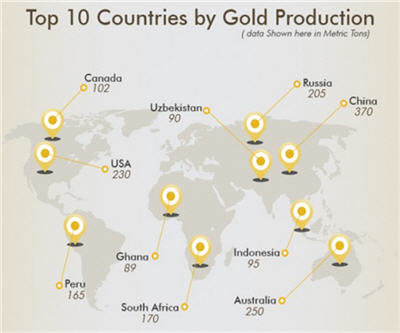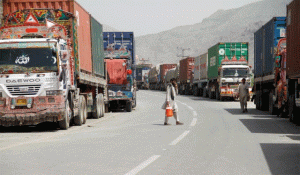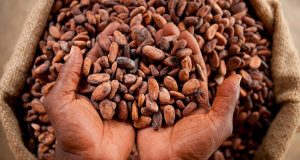South Africa was the world’s largest gold producer for decades until 2006. Its gold output has been declining in recent years. Many other countries, in contrast, have been ramping up their production. However, no country has been able to match South Africa’s peak production of above 1,000 tons per year in the 1970s. Here we take a look at the top 10 gold producing countries in the world according to the GFMS Gold Survey 2018. The 2019 report isn’t out yet.
These are the largest gold producing countries.
As per the GFMS Gold Survey 2018, the worldwide gold production stood at 3,247 tons in 2017. That’s five tons lower than the 2016 output, and it marks the first annual drop in gold mine production since 2008. The report blamed environmental concerns, rising costs, and the crackdown on illegal mining operations for the lower output.
The top 10 largest gold producing countries in the 2018 GFMS Gold Survey were same as the 2017 report. But Canada has jumped two spots to 5th place, pushing Indonesia down.
10- Ghana (101.7 tons)
This West African nation is the second largest gold producer in Africa. It produced 101.7 tons of bullion in 2017, up 7 tons from the previous year. Ghana has rich mineral resources. In fact, Ghana’s mining industry alone accounts for more than 5% of its GDP and 37% of exports. Gold contributes more than 30% of its total exports. The country is also a major producer of diamonds, bauxite, and manganese.
9- Mexico (130.5 tons)
Though gold production in Mexico declined slightly in 2017, it remains one of the world’s largest gold producing countries. It has more than doubled its bullion output since 2008. In recent years, the mining sector has been facing challenges due to fluctuating prices and maturing gold mines. However, the discovery of several new mines and the lower cost of regulation has helped Mexico become a global gold mining hub.
8- South Africa (139.9 tons)
South Africa’s gold mining peaked in the 1970s and has been slowly declining since. Its output has tumbled more than 85% since 1980 but it’s still one of the world’s largest gold producing countries. Its Mponeng mine goes 2.5 miles deep underground. Miners in South Africa have been struggling due to rising labor costs, water shortage, employee strikes, and fluctuating gold prices. Racial tensions have also hurt the mining industry.
7- Indonesia (154.3 tons)
Indonesia is home to Grasberg, one of the largest gold mines in the world. Its gold production in 2017 declined 11.7% compared to the previous year. The Grasberg mine alone accounts for more than a third of the country’s total gold production. The mine also has the world’s largest gold reserves.
6- Peru (162.3 tons)
Gold output in Peru has declined for two consecutive years due to a crackdown on illegal mining operations. Illegal gold mining remains a major concern for the country. It has led to the devastation of vast lands including in the Amazon rain forests. The local residents have also complained of mining activities contaminating the waterways. The Yanacocha mine is the world’s second largest open pit gold mine. It has produced more than $7 billion worth of gold.
5- Canada (175.8 tons)
Canada ramped up its mining activity to produce 175.8 tons of gold in 2017. A couple of years ago, global warming caused a glacier to retreat significantly in British Columbia, which led to the discovery of a large goldfield. The country witnessed a gold rush in Yukon territory in the 1800s. A large chunk of its gold is mined from the Canadian Shield.
4- United States (230 tons)
The United States of America is the world’s fourth largest gold producer. Its gold output has been increasing consistently for the last few years, thanks to the increased production at the Cortez mine in Nevada and the Cresson mine in Colorado. Nevada alone accounts for more than 75% of the country’s gold output. It is closely followed by Alaska.
3- Russia (270.7 tons)
Russia, the world’s largest country by area, has been increasing its gold production for years and intends to keep doing so over the next decade. Russia accounts for more than 83% of Europe’s gold output. The Russian government happens to be the largest buyer of its local gold production. The country aims to increase its gold production to 400 tons by 2030. According to the US Geological Survey, the country has gold reserves of 5,500MT.
2- Australia (295 tons)
With an output of 295 tons in 2017, Australia is one of the world’s largest gold producing countries. Minerals account for about half of Australia’s exports. The country has one of the world’s largest gold reserves but the majority of its reserves are not accessible. As a result, experts expect its gold production to decline in the coming decades unless the exploration expenses are increased. The Boddington gold deposit near Perth is the largest gold reserve in the country.
1- China (426.1 tons)
China is by far the largest gold producer on the planet. However, its gold output declined in 2017 amid the government’s effort to increase environmental awareness and fight pollution. It still accounts for more than 13% of the global gold output. The country witnessed a significant jump in gold demand since 1990, when the government passed laws to make it easier for people to buy gold. Zhaoyuan city in Shandong province is called “the official city of gold.”
Source: ValueWalk







